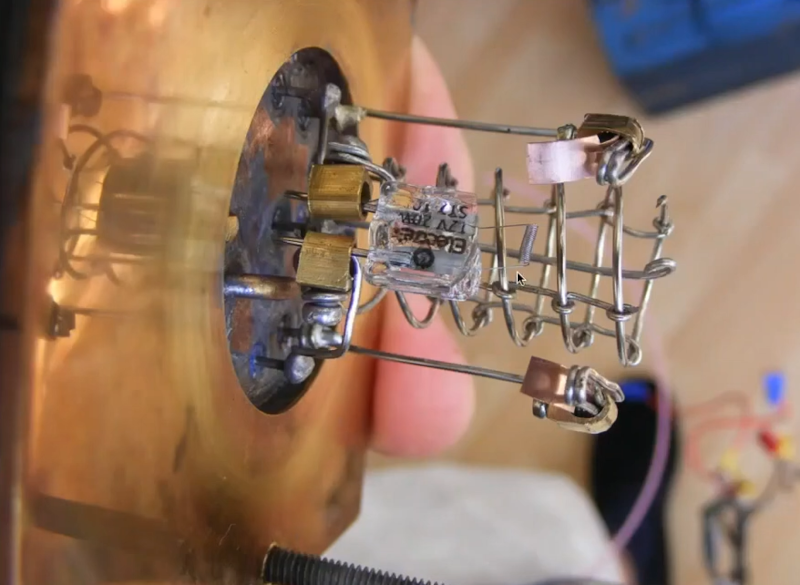Hats off to [Paul Brooking] as he shows off his homemade mass spectrometer in two recent videos you can see below. The first video demonstrates that the device works. The second video shows details about how it was made.
It’s not a good starter project, requiring quite a bit of sophisticated gear including two-stage vacuum pumps, Peltier cold plates, and ion sources, but if you aren’t familiar with mass spectrometers the basic idea is simple enough. You take a sample and bombard it with electrons. This creates a stream of ions of the component parts of the sample. Ions of heavy elements, obviously, weigh more than ions of lighter elements. A magnetic field deflects the ions, and the lighter ones are deflected more than the heavier ones. By detecting ions at a certain spot in the deflected beam, you can determine the relative amount of ions at a certain mass.
There are many ways you can do this, of course. But all mass spectrometers work more or less the same way with just variations on the details. In particular, [Paul’s] device uses a method to detect ions called a quadrupole mass filter. There are four parallel rods that create an RF field that oscillates.
We love to see people building things that were once found only in the highest-tech labs. We would love to see more details about how to build this spectrometer so we could try to duplicate it. There is quite a bit of detail, but we feel like it would still be a big deal to recreate this yourself.
This is not the first homebrew mass spec we’ve seen. Some of them are quite inexpensive.
















Your “quite inexpensive” link is to a visible light spectrometer – which is VERY different from a mass spectrometer.
+1
I bet a really nice DIY time-of-flight mass spec is in reach of the hardware hacker these days. And you don’t need the quadrapole (quadrupole) and all that. I think the 12 bit 2MHz ADC in the STM32F407 in DMA mode can do the data collection. Must – do – calculations!
Even older instruments use 4 GHz ADCs or TDCs (time-to-digital, a bit like a 1-bit ADC) to sample the data. I don’t think you’d get a usable resolution from 2MHz. I’d consider 100MHz sampling the absolute minimum for a usable TOF.
high bandwidth ADCs are expensive and hard to get. I’d consider using multiple medium bandwidth ADCs with an analog mux and programmable delay line ICs on the sampling clock. depending on the samples you want to work with incrementing offset sampling. You could also try capturing the signal in an analog time domain signal buffer, using RF mixers to get down to a lower ” carrier frequency”. Probably i’d try to build crude TDCs from discrete RF components. While you’re at it throw a quadrupole in there it’s not that much more effort. In any case not a trivial project for sure. Also ToF MS need UHV vacuum levels making the system much more expensive than a quadrupole ms.
Very neat. But outside of building one just for fun I would not do it. You can pick up used Residual Gas Analyzers for pretty cheap on ebay, as in a couple hundred bucks if you wait for one to show up, I have bought several. These will have so much better resoltion and be 1/20th the size and have nice software sometime even with analysis to tell you what you are seeing. I dont think I have paid more than $200 for one. I have two Dycor Dymaxions 100 and 200 AMU and a old Leybold 200AMU.
Indeed, now I have even more to check though an “investor” is ok with buying one new for his interest in checking bee honey for various components in concert with my interest testing foods for minerals, the latter of course bit asked as the metals of interest don’t evaporate when a sample fired…
Can I get a base mass spec for somewhere between AUD$5K & 10K as fair to good secondhand at the least…
Thanks
I searched for those units and they now run upwards of a couple thousand. You really found multiple complete functioning units for $200?
A quadrupole mass spec works on a very different principle from a magnetic sector mass spec that was initially described. Then there are ion trap mass specs, time of flight mass specs, and fourier transform mass specs, all of which work on different principles.